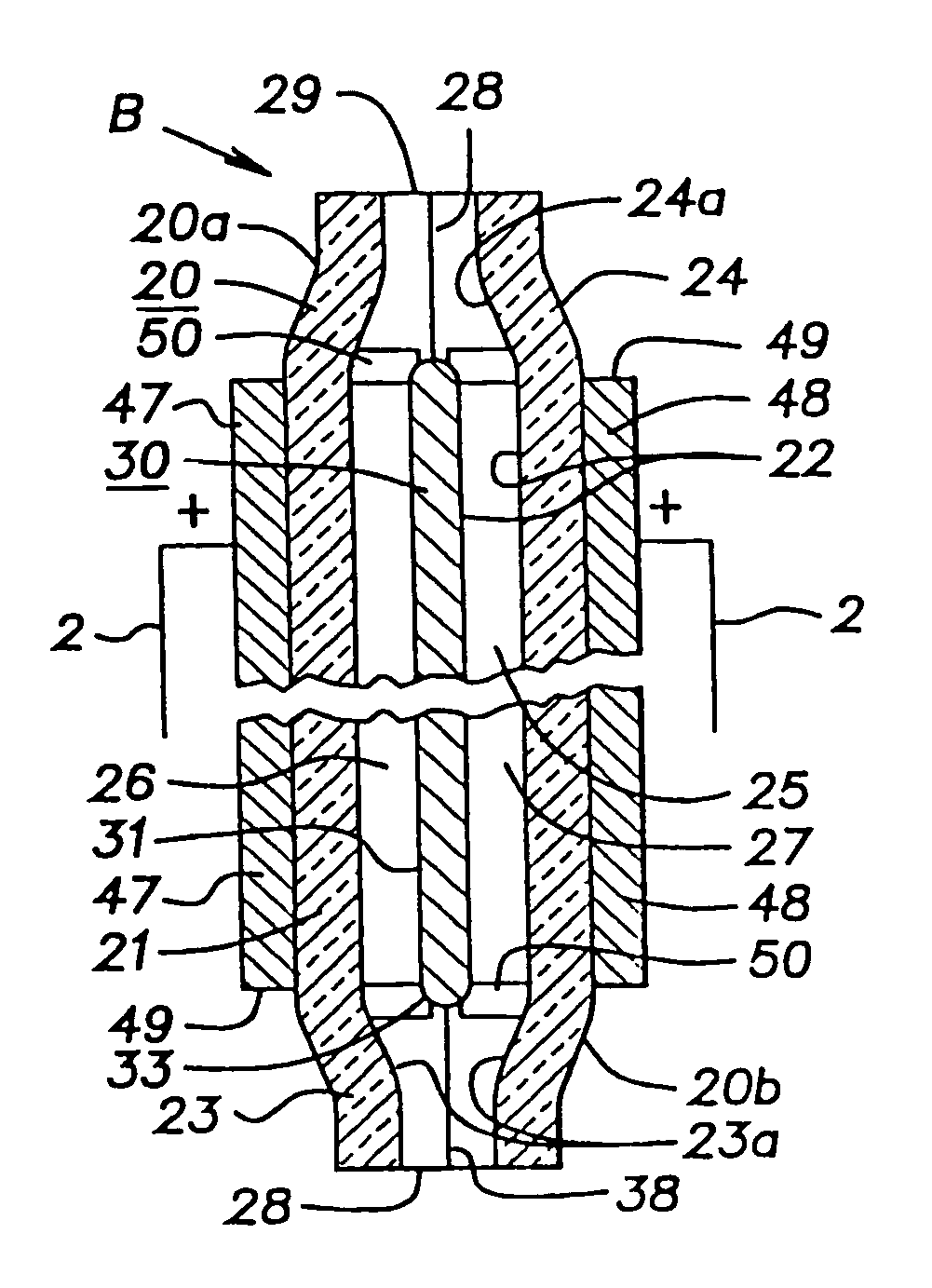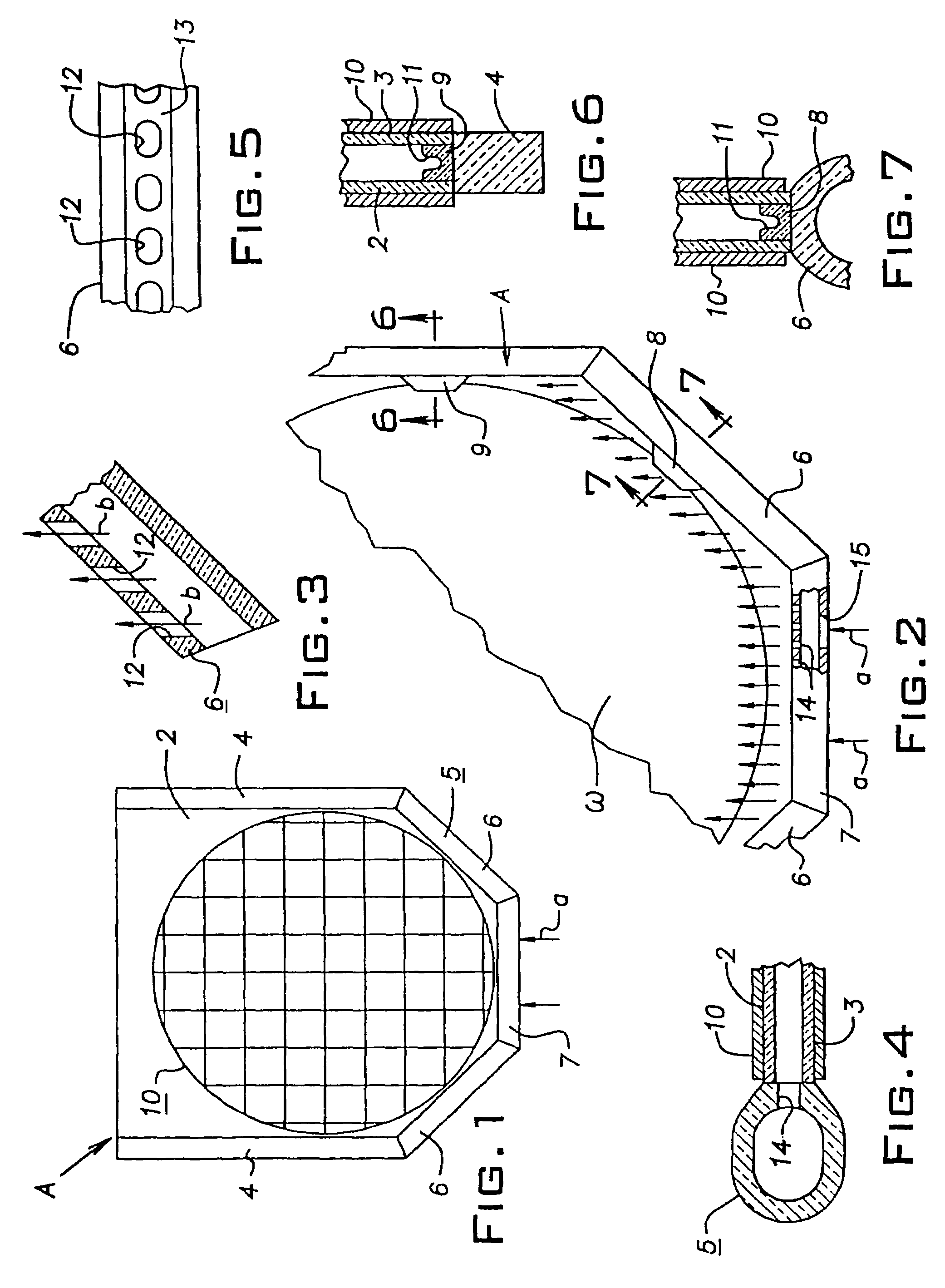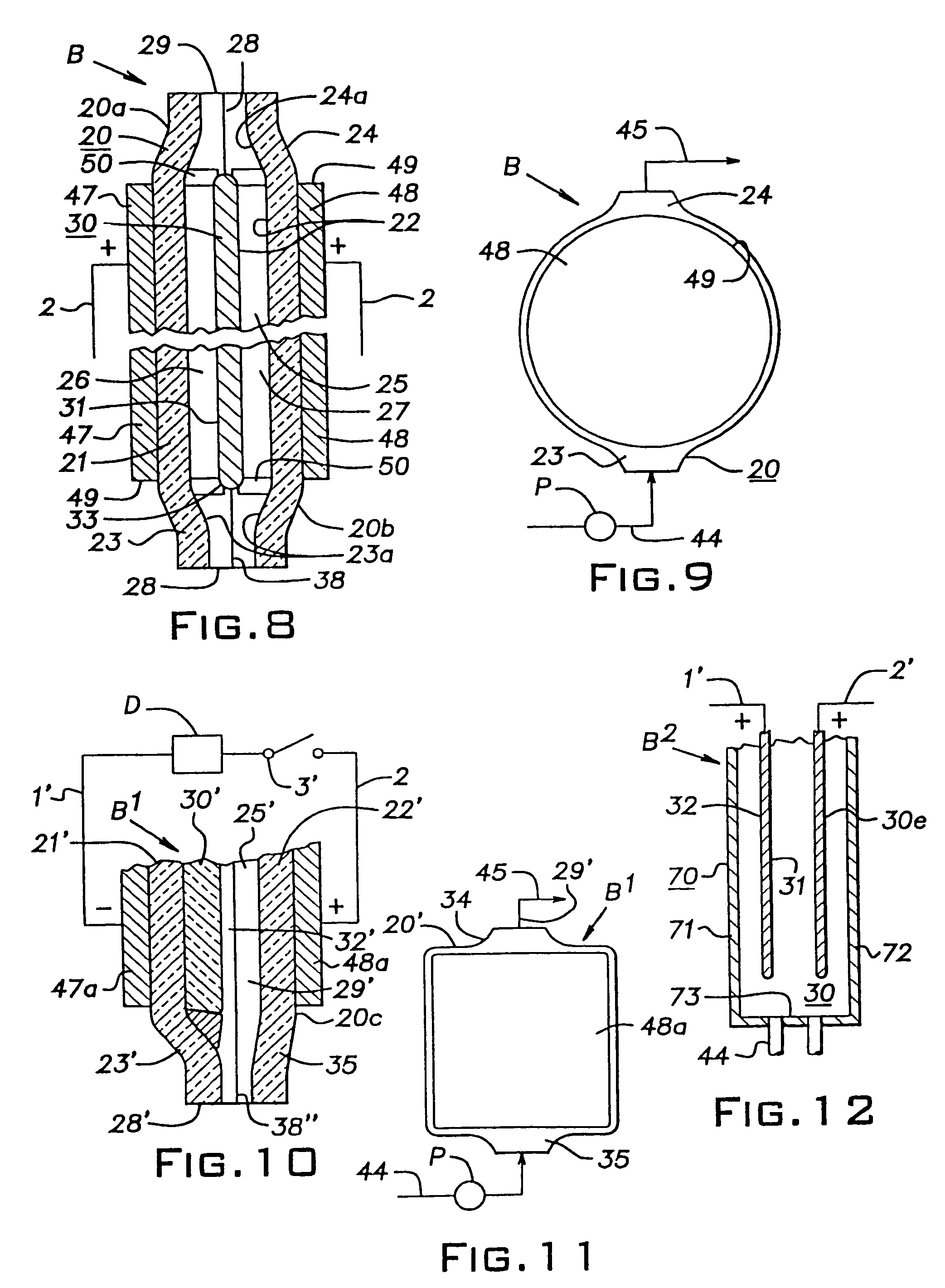Wafer cleaning system
a cleaning system and wafer technology, applied in the direction of cleaning process and apparatus, chemical equipment and processes, semiconductor devices, etc., can solve the problems of ineffective removal of killer particles, inability to eliminate killer particles in the size range of 0.05 to 0.07 micron, and major problems, so as to increase the etch rate of sio2, the effect of increasing the etch ra
- Summary
- Abstract
- Description
- Claims
- Application Information
AI Technical Summary
Benefits of technology
Problems solved by technology
Method used
Image
Examples
Embodiment Construction
[0161]One of the embodiments of the present invention is illustrated in FIGS. 1 to 7 and employs a flattened wafer holder and receptacle 10 designed to receive a single semiconductor wafer w. This embodiment and other embodiments of a similar nature using single-wafer receptacles or the like are believed well suited for modern fabrication systems, particularly those that employ silicon wafers with diameters of 200 mm or more.
[0162]FIGS. 1 to 7 illustrate an embodiment of the present invention wherein a wafer carrier formed of glass, silicon or other suitable material has a narrow internal cavity that receives a single silicon semiconductor wafer and has means for charging the wafer to a small voltage during wet processing operations. These figures provide a simple schematic illustration of apparatus particularly well suited for use in the practice of the invention and are intended to facilitate a ready understanding of the invention and the various ways the apparatus can be used in ...
PUM
| Property | Measurement | Unit |
|---|---|---|
| distance | aaaaa | aaaaa |
| voltage | aaaaa | aaaaa |
| diameter | aaaaa | aaaaa |
Abstract
Description
Claims
Application Information
 Login to View More
Login to View More - R&D
- Intellectual Property
- Life Sciences
- Materials
- Tech Scout
- Unparalleled Data Quality
- Higher Quality Content
- 60% Fewer Hallucinations
Browse by: Latest US Patents, China's latest patents, Technical Efficacy Thesaurus, Application Domain, Technology Topic, Popular Technical Reports.
© 2025 PatSnap. All rights reserved.Legal|Privacy policy|Modern Slavery Act Transparency Statement|Sitemap|About US| Contact US: help@patsnap.com



